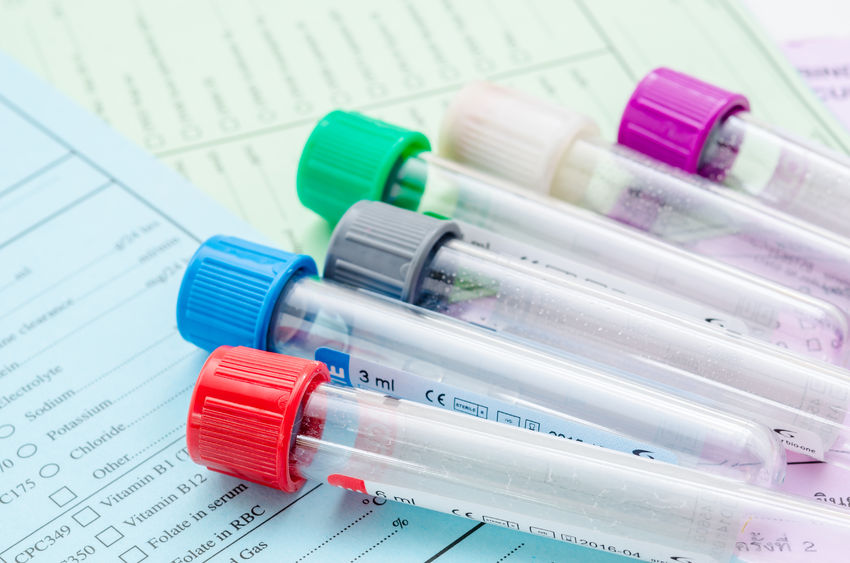
DC
Also known as Differential Leukocyte Count Automated BloodWhat is this test?
This test measures the percentage levels of different types of white blood cells (leucocytes). It also helps to reveal the presence of any abnormal or immature white blood cells. White blood cells help to protect the body against infections and foreign invaders, thus playing an important role in immunity.
Types of White Blood Cells:
There are 5 types of white blood cells:
- Lymphocytes (B and T cells).
- Monocytes.
- Neutrophils.
- Basophils.
- Eosinophils.
Why this test is performed?
Your doctor may ask you to undergo this test to rule out any infections, allergic reactions, inflammatory disorders, malignant blood disorders such as leukemia or lymphoma, etc. This test may also be performed as part of a routine check-up to monitor the overall health of an individual. It may also be performed to monitor the condition of a patient suffering from certain diseases.
If the test result falls within the normal reference range, you have adequate percentage levels of different types of white blood cells and may not require any medical intervention.
Each type of white blood cell is affected in a different way based on the clinical condition of an individual. An abnormal increase or decrease in one type of white blood cell can cause a corresponding increase or decrease in the percentages of other types of white blood cells.
Monocytosis: An increase in the number of monocytes is known as monocytosis. This may be caused due to an autoimmune disorder such as lupus, ulcerative colitis, bacterial infections such as tuberculosis, viral infections, parasitic infections, certain kinds of blood cancers, etc.
Lymphocytosis: An increase in the number of lymphocytes is known as lymphocytosis. This may be caused due to viral infections, allergic reactions, certain kinds of blood cancers, hepatitis, bacterial infections, etc.
Neutrophilia: An increase in the number of neutrophils is known as neutrophilia. This is the most common type of leucocytosis. This may be caused due to infections, injuries, certain kinds of blood cancers, long-term inflammatory conditions such as arthritis etc. Use of some medicines including steroids, lithium, certain kinds of inhalers, etc. may also lead to neutrophilia. Other factors such as smoking, emotional stress, physical stress, trauma, surgery, etc. may also be responsible for causing neutrophilia.
Eosinophilia: An increase in the number of eosinophils is known as eosinophilia. This may be caused due to parasitic infections, lymphoma, some skin diseases, allergies and allergic reactions, certain kinds of cancers, etc.
Basophilia: An increase in the number of basophils is known as basophilia. This may be caused due to allergic reactions, certain kinds of cancers, infections, etc.
Some conditions including liver diseases, bone marrow diseases, certain kinds of cancers, certain kinds of autoimmune disorders, certain infections, etc. may reduce the percentages of one or more type of white blood cells. Other factors such as cancer medicines, radiation therapy, vitamin B12 deficiency, folic acid deficiency, etc. may also be responsible for lower percentages of white blood cells.
Precautions:
Certain medicines such as prednisone, prednisolone, lithium, heparin, diazepam, furosemide, ranitidine, hydrochlorothiazide, etc. may affect the results of this test. Hence, it is advised that you report all your medications to the doctor before undergoing this test.
Pathology test parameters:
- Lymphocytes.
- Monocytes.
- Neutrophils.
- Eosinophils.
- Basophils.
Also known as DLC Automated Blood, Differential Count WBC Automated Blood, Differential White Blood Cell Count Automated Blood, DC Automated Blood, Differential Count Automated Blood, Differential Count, Differential Count WBC, Differential Leukocyte Count, Differential White Cell Count, DLC.
Test Preparation
Inform your doctor if you are on any medications, have any allergies or underlying medical conditions before your DC. Your doctor will give specific instructions depending on your condition on how to prepare for DC.
No specific preparation is necessary for this test. However, if it is performed along with other blood tests, you may need to fast (not eat or drink) for several hours, as per the instructions of your doctor.
Understanding your test results
If you have higher or lower than normal percentages of one or more type of white blood cells, consult your doctor for further instructions. Based on the test results, your doctor may advise appropriate medical treatments, lifestyle modifications, or further diagnostic tests.
| Gender | Age groups | Value |
| UNISEX | All age groups | 40-80% |
| UNISEX | All age groups | 20-40% |
| UNISEX | All age groups | 2-10% |
| UNISEX | All age groups | 1-6% |
| UNISEX | All age groups | 1-2% |

